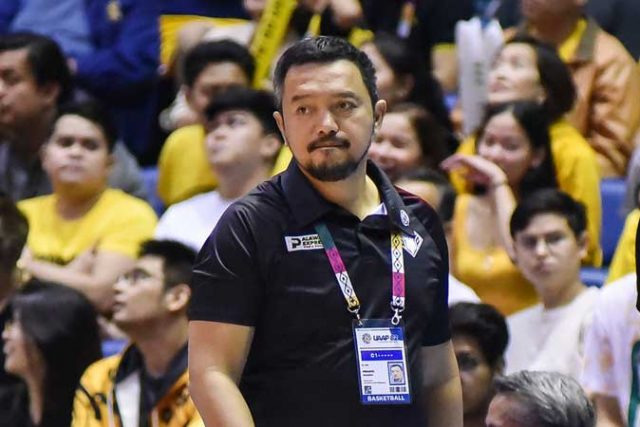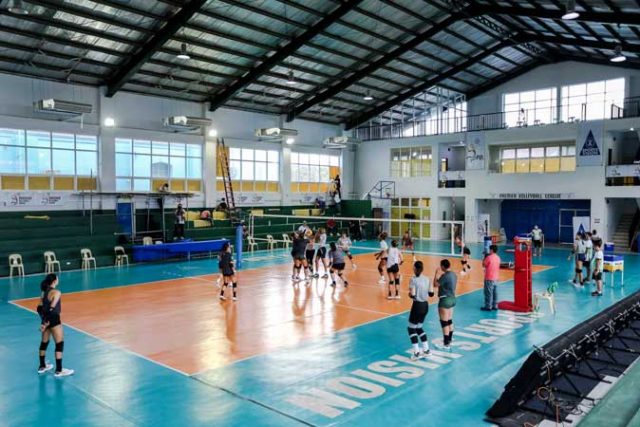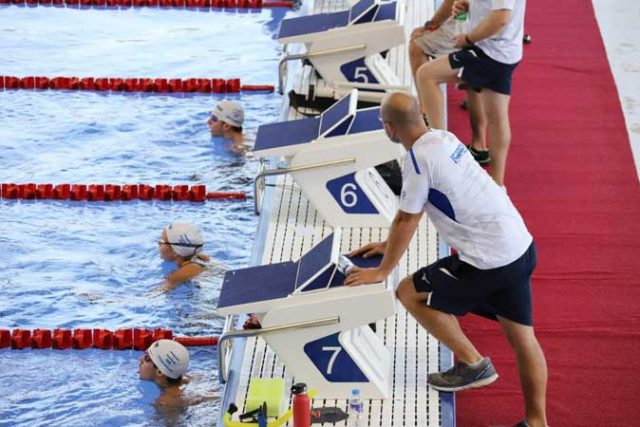Last Monday’s optimistic stance of the Bangko Sentral ng Pilipinas (BSP) based on the pace of vaccinations and the Filipinos’ willingness to be inoculated was extremely contagious. If the pace gathers more momentum, it is likely the economy would further reopen and strengthen business and consumer sentiment. The BSP was also sanguine that the US Fed’s hawkish monetary inclination would not be too problematic from our own standpoint.
Of course, the broadsheets also reported on Moody’s caution against premature loosening of social restrictions. This is reasonable considering the recent upsurge of the virus and rapid spread of the Delta variant across the Asia Pacific region. We must be more careful in easing our health protocols.
And a reality check came late on the same day.
Fitch Ratings downgraded its credit outlook on the Philippines from “stable” to “negative.” In its own commentary, Fitch explained that the revision of the outlook “reflects increasing risks to the credit profile from the impact of the pandemic and its aftermath on policy-making as well as on economic and fiscal out-turns.”
Fitch pointed out the downside risks to medium-term prospects due to “potential scarring effects,” presumably from lower output, higher unemployment and weak productivity. Fitch also identified possible challenges arising from the need to unwind extraordinary policy responses to COVID-19 and restore sound public finances. Fitch calls these “rating sensitivities.”
The downgrade by Fitch was a downgrade of the credit outlook, rather than the rating itself. It’s a warning. An economy that descends from a stable to negative outlook risks a rating downgrade in the next 18 months. With a current BBB credit rating, the country could likely slide down to BBB-. By all means, we should all try to avoid this.
Based on our engagement with credit rating agencies for two decades, it is not difficult to suggest that subsequent credit rating actions will really depend on the following:
1. Public finance: if government debt to GDP continues to rise due to either a reversal of policy reform or departure from prudent macroeconomic policy, the Philippines will reap a downgrade. However, if public revenues expand and reliance on borrowings declines, an upgrade is possible.
2. Macroeconomic: if the outlook for output growth continues to deteriorate with diminishing policy credibility, a downgrade is inevitable. If the economy shapes up and the policy framework gains credibility, it’s possible to even achieve a credit upgrade.
3. External: If FX reserves sustain a declining trend, the current account deficit deteriorates, and net external debt shoots up, the economy’s resiliency might be dented. A downgrade is likely. An improvement in the external payments position would suggest a possible elevation of credit standing.
On public finance, there is disturbing news.
Last Monday, senators assailed the Department of Budget and Management (DBM) for keeping the funds for several projects amounting to some P160 billion. The General Appropriation Act is effective only up to Dec. 31. We are therefore losing time. The DBM classifies this chunk as FLR or “for later release.” The release can only be cleared by the President, the Budget Secretary, or any other designated official authorized by the Chief Executive. This is not exactly the intent of Bayanihan I and II which are both aimed at pandemic-induced compensatory spending. From Bayanihan II alone, some P63.55 billion remains unspent.
What are we waiting for?
We need to recall that if both consumption and investment are weak, public spending is expected to make up. Since some funds are withheld because politics may be a consideration, this is lamentable. Public spending is needed by the people who were affected by the pandemic and its economic consequences. Government projects do not only add infrastructure, but they also provide employment and pump more resources into business activities. If borrowed, we are paying interest on those idle funds.
In contrast, some funds have been released to selected recipients. For instance, about P16.5 billion was released to fund anti-insurgency. This is a consequence of the Anti-Terror Act whose constitutionality remains in question in the Supreme Court. Some public funds were also reported to have been released to operate the so-called troll farms. Twelve senators recently filed a resolution enjoining the appropriate Senate committee to investigate the alleged use of public money to finance super spreaders of fake news and misinformation, disguised as “public relations practitioners.” With this kind of budget priority, it would be difficult to rely on public spending to support quick economic recovery.
On the macroeconomy, it looks like there are green shoots.
Philippine manufacturing output seems to have recovered from a very low base in May with the rise in domestic demand for manufactured products and the expansion of external markets. Based on the PSA’s latest Monthly Integrated Survey of Selected Industries, the volume of production index surged by 265%, the second monthly increase after 13 months of decline.
Foreign direct investment net inflows more than doubled in April to $679 million from a year ago’s $317 million. Equity capital placements from Japan, the US, and Singapore went into manufacturing and real estate. But net placements of equity capital and reinvestment of earnings perked up rather modestly, perhaps due to the lingering effects of the pandemic on market confidence.
Consumption expenditure may likely recover with the sustained double-digit increase in OFW cash remittances in May. This must have been driven by the early recovery in key labor markets in North America and some parts of Asia. May’s cash remittances stood at $1.89 billion or $12.28 billion for the first five months of 2021. Annualized, this would come up to around $29.47 billion, almost unchanged from last year’s $29.90 billion and 2019’s $30.13 billion.
Despite our loose monetary policy, we continue to see some stress in the banking system. Fitch Ratings raised some concerns about the banks’ lower market-related income and compressed margins. Their first quarter net income dropped while net non-performing loan ratio is expected to hit 6% this year compared to last year’s 3.1%. Stress levels will hopefully stabilize as most banks continue to enjoy good capitalization and provisions for credit losses.
The wild card is the pandemic wards. If we foul up on containing the virus, more lockdowns would not be far behind.
On the external payments side, there are dark clouds.
The current account, which was mostly in surplus position last year because of depressed imports, has reversed into a widening shortfall. The immediate casualty was the peso which weakened to P50 to a dollar a few days ago. The stock market was shocked but was calmed down only because the BSP assured the market that it was ready to step in and tame any sharp depreciation. The analogue of that statement is that the BSP could either sell dollars to the market and siphon off pesos, a monetary tightening move, or increase the policy rate, another form of monetary tightening. Either way, this is against the current stance of monetary accommodation until we see more evidence of entrenched economic recovery.
What we are worried about is the path of external sector indicators. If we drop the ball again on pandemic mitigation, we might face the prospect of extended economic restriction. More funding will be required for social amelioration, health facilities and, yes, more vaccines. With weak revenues, the only option available to the authorities is to increase domestic and foreign borrowings. One inexorable outcome would be higher debt payments that in the future could eat into the national budget. In the first five months of 2021 alone, debt amortization ballooned by 21% from a year ago’s P513 billion to P624 billion. Total debt breached P11 trillion at end-May 2021, of which 28% is owed to foreign creditors.
If lockdowns are prolonged, we would have a situation where external debt is rising rapidly but GDP growth is lagging behind.
This is negative for Fitch, this is negative for Moody’s and S&P. Most important, this is negative for our people because the translation on the ground is limited jobs, higher prices, and widespread poverty. As reported by the Social Weather Station (SWS) the other day, “hunger incidence remained high” in the first quarter 2021. SWS claimed based on its survey that some 4.2 million families or 16.8% “experienced involuntary hunger or hunger due to lack of food to eat in the past three months prior to the survey.”
We are quite familiar with the methodologies of the three major credit rating agencies having dealt with them for many years, but we are not privy to how they appreciate all those balls in the air. Bottomline is that we need a strong resolve to keep our eye on the ball.
The ball is not about May 2022, it is about the future of our country and our people.
Diwa C. Guinigundo is the former Deputy Governor for the Monetary and Economics Sector, the Bangko Sentral ng Pilipinas (BSP). He served the BSP for 41 years. In 2001-2003, he was Alternate Executive Director at the International Monetary Fund in Washington, DC. He is the senior pastor of the Fullness of Christ International Ministries in Mandaluyong.







